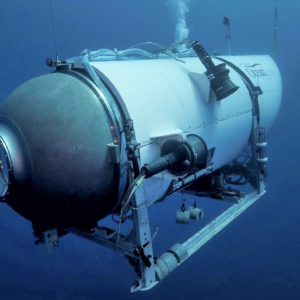Technology used to find the lost Titan submersible
The titanic tragedy has resurfaced at the 111th anniversary of its wreckage through the disappearance of the manned Titan submersible this week.
Five men embarked on the “titanic expedition” hosted by company OceanGate Expedition on June 19th, an excursion that supposedly cost around $250,000 per person. After about 1 hour and 45 minutes, crew on the nearby Polar Prince ship lost contact, and the submersible was pronounced missing by the U.S. Coast Guard of Boston.
After 4 days and an estimate of only 96 hours worth of oxygen available on the vessel, the search came to a tragic end. On Thursday, authorities reported that the submersible had imploded, killing the passengers. Why did it take so long to find out what happened? How did technology aid in this case? The following are the techniques that experts employed to search for the submersible and eventually discover its wreckage.
Aircraft surveillance technologies
On Wednesday, a P-3C Orion maritime surveillance plane searched the area of the titanic wreck, and identified unexplained banging noises occurring from the depths at 30-minute intervals. The patterned banging led some experts to assume that they could be human made. Though the Coast Guard now says the banging was likely unrelated to the submersible, the plane used advanced technology to try and close-in on the vessel’s location.
The aircraft operated by flying above a targeted area and dropping a sonobuoy on top of the water. Using passive detection, the device listens for abnormal sounds like propellers and machinery in an attempt to hear signs of activity. It also used magnetic anomaly detectors to find breaks in the earth’s magnetic field that could be the submersible’s metal exterior, though the Titanic wreckage makes this difficult.
The new Boeing P-8 Poseidon was also used in the search, the most advanced maritime patrol craft in the world. Crew on this aircraft used a gridlike system to eliminate areas where the submersible wasn’t, then deployed sonobuoys in fields where the vessel could be located. From there, they used active detection to send out solar pings that would bounce soundwaves off a possible vessel. The advanced P-8 was also equipped with an acoustic sensor, a synthetic aperture radar to detect surfaced wreckage from far away, an Electronic Support Measure (ESM) to track radar emitters, and more.
Remotely Operated Vehicles (ROVs)
Remotely operated vehicles (ROVs) were thought to be the best bet in the rescue of the submersible. These manually controlled vehicles work similar to an underwater drone, tethered to an operator located at the surface. ROVs can venture much farther than divers and most machinery. Additionally, they have robotic arms capable of grasping objects or releasing weights.

Several ROVs were sent out, guided to locations by the maritime aircrafts. Canadian vessel Horizon Arctic and French vessel Atalante deployed ROVs that reached the sea floor on Thursday.
On Thursday afternoon, ROVs are responsible for discovering the submersible wreckage including a landing frame and rear cover. While it’s unclear how long the Coast Guard will continue the investigation, ROVs are still deployed to search for clues of what happened around the Titanic.
Conclusion
All in all, this search marks a massive tragedy that could have possibly been avoided with better safety measures and stronger technology. The search also will cost the US Coast Guard and other entities that rushed to help millions of dollars in rescue services.
This case also stands as a turning point in maritime technology. Because of the fast-growing popularity and media attention, all eyes will be on future submersible expeditions from here on out. Hopefully, technology will soon be able to allow for safer and more advanced underwater vehicles, and be better prepared for when disaster strikes.









